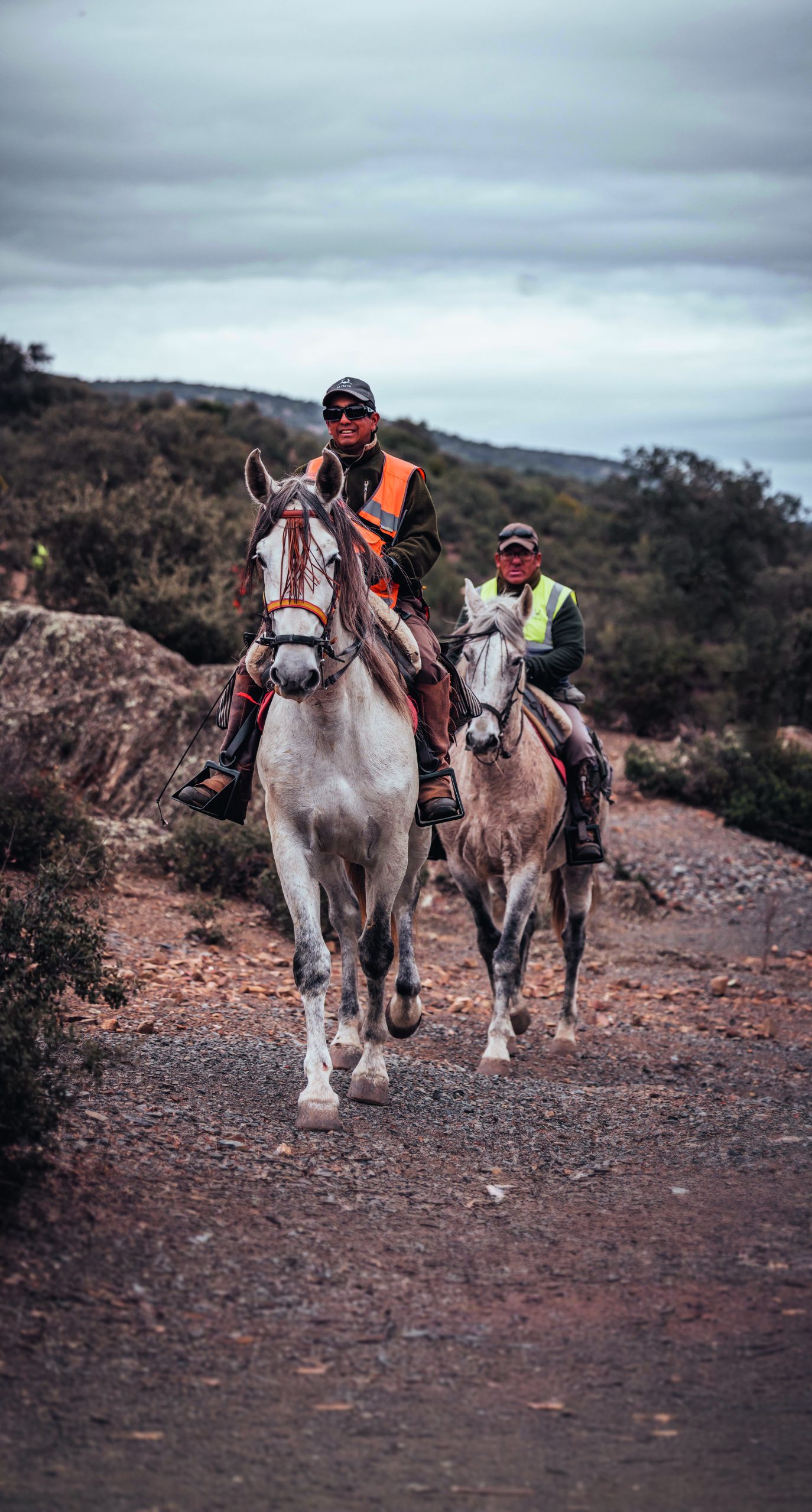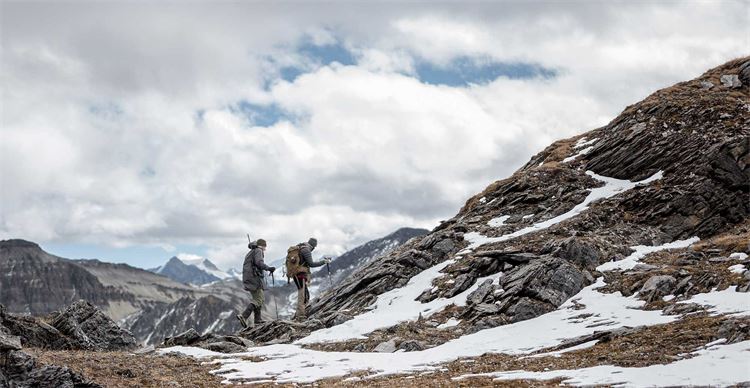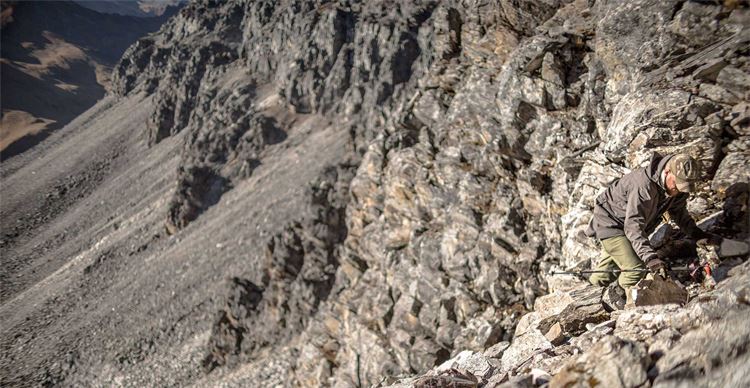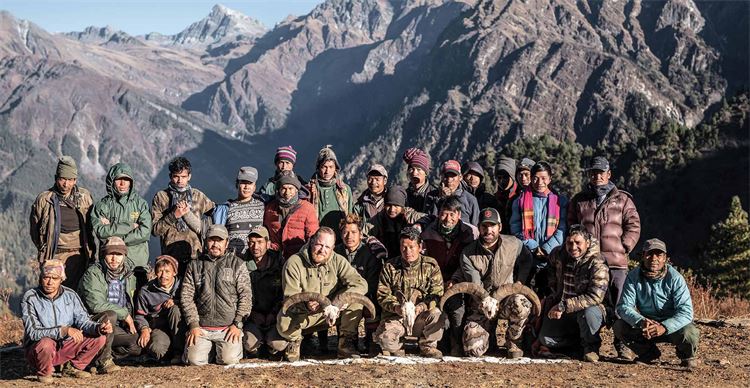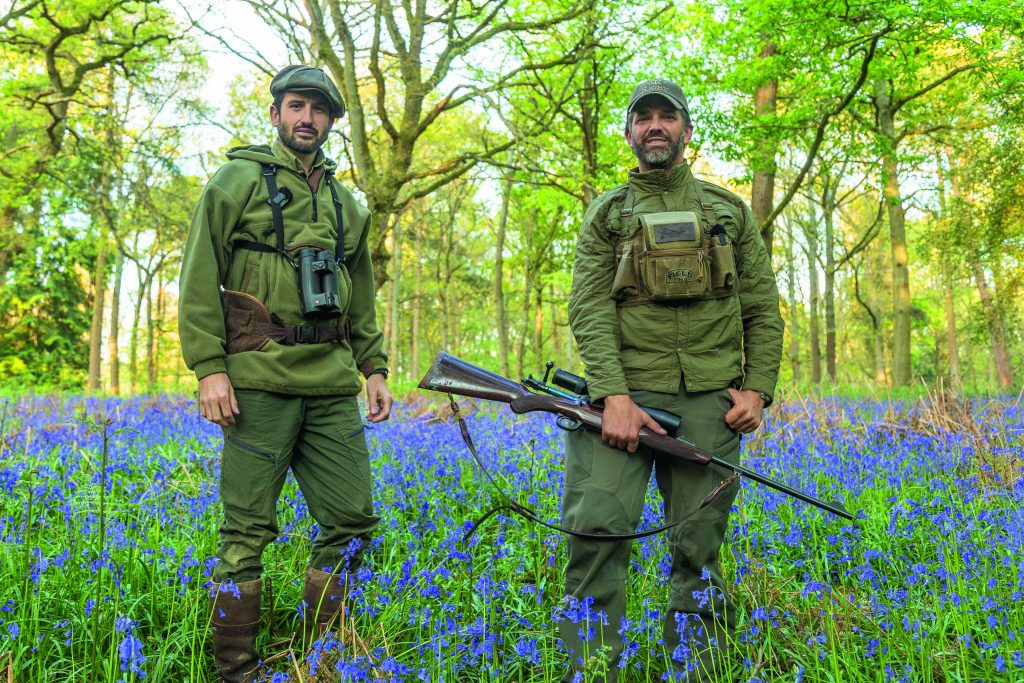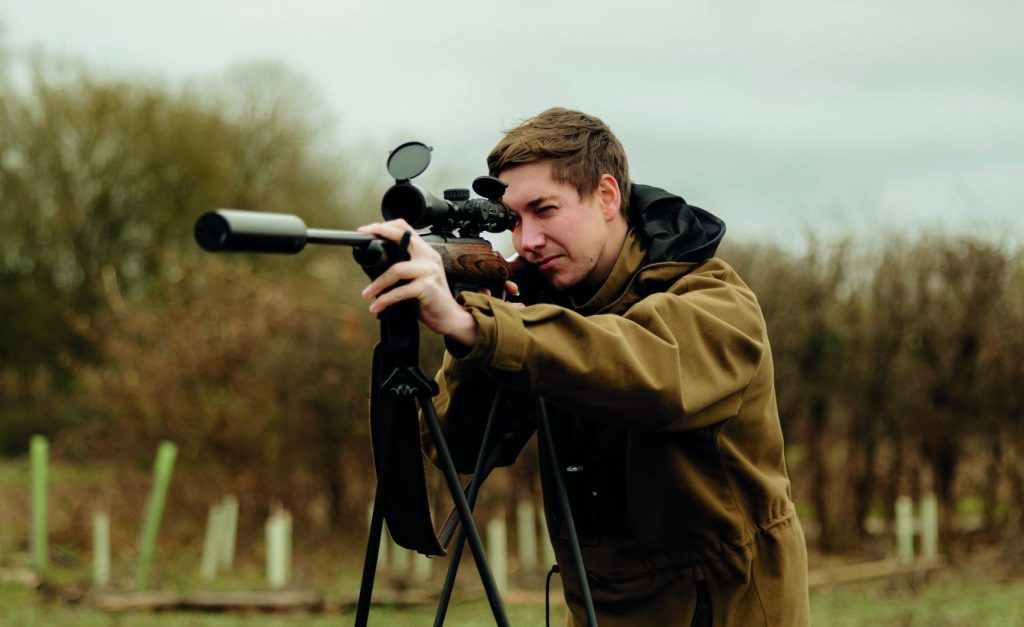Hunting Himalayan blue sheep
Setting his mind to a seemingly impossible task, Simon K. Barr endures the most gruelling hunting experience of his life as he goes in pursuit of Himalayan blue sheep – an enriching adventure he will look back on for the rest of his life.
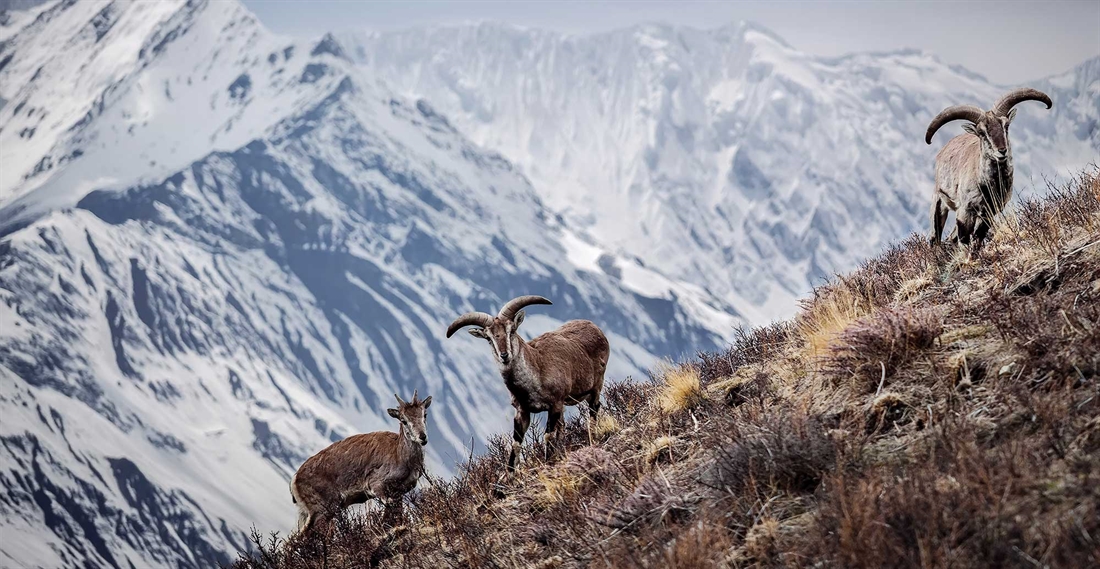
Altitude can kill – and the old adage ‘What doesn’t kill you makes you stronger’ does not apply. Waking at just over 14,000ft is not pleasant – the chill sets in, sucking the warmth from your body, while your head throbs. Ibuprofen takes a little edge off the head, but does nothing for the nausea, the exhaustion and the sensation of weakness one encounters at high altitude. The thought that if I had just been that much fitter, put in a few more hours, prepared myself better, crossed my mind. The truth, however, is that no matter how fit you are, Acute Mountain Sickness (AMS) can get you, and while the sherpas with us seemed to leap about the mountain like the blue sheep we were now looking to hunt, I had to resign myself to the possibility that I might not manage the next leg of the expedition.
Fortunately, after four days’ brutal climbing to get to camp four, I had a day’s grace. A day to recoup, recover and to decide whether I had it in me to complete my hunt for a blue sheep, the highest living game species in the world. Matt Fowler, an American hunter who was part of the expedition was hunting for the day, and I could try and adapt to lower oxygen in camp. I heard the hunting party leave in the dark gloom at 5am. I drifted in and out of fitful, hallucinatory sleep – waves of nausea crashing over me – for a few hours, before being woken more vividly by excited voices. Astonishingly, just three hours after his departure, Matt was back, having succeeded in shooting a seven-year-old ram. I watched the party returning, the sherpa heroically carrying a 75kg beast in a bamboo basket strapped round his head.
The sight of the party returning with their prize was just the thing I needed to spur me on, to give me the confidence and push I needed for my hunt. I knew the next day or two might be tough and, if I was to succeed, I’d need to try to rest. Easier said than done: later that day I didn’t just feel nauseous, I vomited. I retreated to my tent in an effort to sleep, emerging only to discuss the next day’s tactics with the guide: a group of sheep was known to be on the slopes on the other side of the mountain next to camp. It would be a full day’s climb to get within range of them, but it was our best chance. How we would return the same day was my next worry.
Our guide, Mann Punmagar, was astonishing. Aged 42, he’d been a poacher and a Buddhist. He’s now a Christian, but has two wives (who are seemingly okay with this arrangement), and is as tough as they come. His stories of adventure and snow leopards in the mountains were hard to believe – until you spent a day or two in the mountains with him, and then, suddenly, they rang true. Like the sherpas, spotters, cooks and the entire team, Mann was small and nimble, and suffered none of the problems of altitude. None of the team wore proper boots or crampons, either; they had simple tennis shoes – thin, worn and soft-soled.
My head pounded in a place it has never hurt before as I packed up my rifle at dawn the next day, the cold wind biting at my ears, my neck, my nose. My 1-litre flask of water was an icy slush within five minutes of our headtorch departure from camp, and it had frozen solid by the time we had enough light to turn the torches off. To traverse the enormous mountain and get to the slopes where the sheep were thought to be, we first had to drop down the mountainside, knowing it would add an extra 1,000ft to our overall climb. I scrabbled to keep up with Mann and the spotter, aware that falling here was not an option – death an ever-present reality. We had to traverse a precariously poised boulder field for over a mile. This was a dangerous place. Every step echoed deep inside the nestled rocks as they gently moved with our weight. The scale varied from smallish, ankle-breaking rugby balls to crushing London-bus-sized boulders. All were randomly stacked like an uneven and less entertaining game of Jenga. The only way to manage this ongoing risk was to ignore it.
Eventually, we started to climb again, following the contour of the mountain, its 15,000ft peak barely visible. As we rounded a bend, we spotted a group of sheep, some 12 of them, and stopped to get a better look with our spotting scopes.
My heart sank. We were not sure if there was a mature ram among them, and no matter how many times we scanned with hope, mature horns did not materialise. It was now midday, and after seven hours of negotiating boulder fields, we had nothing. Not only that, but we had less than five hours of daylight left in which to return to camp. It was a desperate moment, and my desperation was compounded by terror. In broken English, Mann explained that there was not enough time to go back the way we’d come. We’d have to go over the mountain. Yes, over, and without ropes or climbing equipment. That brazen decision also meant taking the boulder field again, but this time vertically.
There are times in your life when you think “I can’t do this. I know I have to, but no.” These are life-defining. In my generally risk-free, centrally heated, airbag-protected world, I only have metaphorical mountains to climb. But this was a real one. All 15,000ft of it. Gnarled, visceral and remote. I truly didn’t think it was possible, but what choice was there? There was no rescue here, no quick exit, no way around, or down. The only way back was over the top. I took a deep breath and started after Mann. Again the boulder field and, with it, more danger. Every step moved the network of rocks, shuddering, grumbling, setting off mini-avalanches below.
I knew if I stopped I might not start again – I would freeze literally in fear. One foot in front of the other, I concentrated, for it wasn’t just the sliding rocks and boulders that were a danger – this was classic ankle-breaking terrain, and each step must be taken with the utmost care. For three hours we climbed, steadily making our path up this kinetic, rumbling mountain. Looking back, it was like seeing one of those arcade games – where shelves of coins slide forward and backward, dropping pennies to the abyss below. Except these weren’t coins. These were tonnes of sheer granite, and they would happily carry us with them.
Finally, with some grit, I conquered my demons and with them the mountain. I achieved more than I thought I could. Having set my mind to this seemingly impossible task, I had overcome it. I took a great deal away from this experience. How often are we faced with a complex business problem or personal issue which seems impassable? By focusing only on the next step or two and not being overwhelmed by the magnitude of the issue ahead, it is possible to achieve significantly more than we think.
We had summited at 15,000ft, the highest point I had ever been on foot. I felt like I could breathe again as we momentarily rested and, though I knew we still had to get to camp, I was giddy with relief.
My relief turned to excitement as the sun began to set. From this high vantage point we could see a group of blue sheep calmly grazing – five females and two mature males, perhaps a kilometre away from camp. It gave me the strength and focus I needed for the final push in the dark to camp, the temperature having dropped well below zero. I retired to my sleeping bag almost as soon as we got there, at 6pm, after 13 of the most gruelling hours I’ve ever experienced. What a day.
The next morning we left under headtorches at 5am again, and for the first time in days I didn’t feel sick, I didn’t have a headache and I felt positive. The weather had changed – we were no longer bathed in sunlight, and with clouds above and a chill wind from the east, the cold caught up with me every time we paused to glass the mountainsides or catch a breath. The scout had moved on ahead of us, to the top of a ridge, and as we caught up with him, he explained that the sheep were 800 metres away from us. They had moved a long way from where we had spotted them at dusk the day before.
In most landscapes, if your quarry is 800 metres away from you, you know that it won’t be long before you can get into position for a shot. In the Himalayas, however, things are a bit different – 800 metres in those majestic mountains could be impossible to reach. To compound matters, the sheep were in an awkward place, feeding away from us, to the west – the wind was behind us and we would need to try to get around them to find a shooting position.
We descended as fast as was possible, heading along a valley, dropping below our hard-won altitude of 15,000ft, and then climbing steeply back to 15,600ft. Now on a grassy plateau, we moved cautiously and silently, hoping to find a good position to take a shot from. To our surprise, a lamb, on its own, appeared not 70 metres away. Mann didn’t seem too concerned, but would it turn and run to the group, alerting them of our presence? It headed towards them, and we moved forward fast, knowing our time was running out. The sheep were moving out of the bowl, and if I didn’t take a shot in the next few minutes, we’d lose them altogether.
We could see the animals grazing, but neither of the mature rams were visible. I set myself up, finding a solid prone position from which to shoot with both elbows rested. Time was pressing now, and I ranged the shot, using my Leica Geovid HD-B binoculars. At this stage, guessing a ballistic solution would be pointless – we were at 15,600ft, so the barometric pressure would skew the bullet’s normal trajectory, as would the angle, which was 17 degrees, and the -5°C temperature. The distance – 346 metres – would be hard enough to judge with hold-over under normal circumstances, but here there was little chance of getting it right. I breathed – the rangefinders gave a reading in less than a second, telling me I should allow 16 clicks of elevation. By this stage, the ram had appeared but with literally seconds to make the shot. I breathed and squeezed, then reloaded immediately, and watched as the ram burst to the left, uncertain of myself. I needn’t have been. The ram dropped after a few paces and rolled, and didn’t move again. What a relief.
It took a while to reach the ram, and it was then that I knew this was a shot in a lifetime. For all the fear, sickness and exhaustion, I’d managed to place the shot well, taking out both lungs and the top of its heart, killing him instantly. This animal was hard-earned and one I am proud to have toiled for. I spent a few minutes reflecting next to the downed carcass. Quietly sitting with the sherpas, I looked around at the timeless landscape of the Himalayas, and distilled the moment into the memory I would keep and take. This was very special.
The unusual creature was hefted into a basket and secured around the sherpa’s forehead. Then we made our way back to camp, where the ram would be butchered for his meat. By the time we got back, the adrenalin had worn off, and the altitude had caught up with me again, giving me a headache that would put any hangover to shame. But what a hangover won’t give you is the relief, gratitude and feeling of achievement that this adventure provided.
Hunting is so much more than pulling the trigger. My Nepalese-Himalayan expedition is something I will look back on for the rest of my life, knowing that I overcame some of my darkest moments and worst fears, and for that my life is enriched and I will always be grateful.
Himalayan blue sheep
Listed as a species of least concern on the IUCN red list, the Himalayan blue sheep, or Pseudois nayaur, is found in Bhutan, China, northern India, northern Myanmar, Nepal and northern Pakistan. Known as bharal in Hindi or naur in Nepali, the rams weigh up to 75kg, and are slightly larger than females. A short, dense coat is slate grey, and the bluish sheen gives the blue sheep its common name. The colouring is the perfect camouflage for the bleak and hostile stony slopes they inhabit. The underparts and backs of the legs are white, and the chest is black. Both sexes have horns, with ridges on the upper surface, but the males’ horns are distinguishable by their upwards growth which then turns sideways and curves backwards. The rams grow horns up to 80cm, whilst the horns of the females are substantially smaller and grow up to 20cm long.
Feeling fit enough?
The Nepalese Government issues 20 licences a year for blue sheep and 10 for tahr. The costs can vary from year to year based on an auction system. The proceeds of the tag go to local conservation projects and a community charge is levied per animal which goes directly to local villagers as a payment which negates any incentive to poach. Each expedition directly employs over 30 people bringing much needed income to remote parts of Nepal that are not on the tourist trail.
Expeditions start from US$20,000.
Outfitter details: Global Safaris Nepal. www.huntnepal.com
Kit box
Sauer 404 XTC in .300 Win Mag
Leica Geovid HD-B 3000 10×42 rangefinder binoculars
Leica Magnus i 1.8-12×50 riflescope
Hornady Precision Hunter 200-grain ammunition
Swazi Tahr Ultralight
Leki Carbonlite Trekking Poles
Related Articles
Get the latest news delivered direct to your door
Subscribe to Fieldsports Journal
Elevate your experience in the field with a subscription to Fieldsports Journal, the premium publication for passionate country sports enthusiasts. This bi-monthly journal delivers unparalleled coverage of game shooting, fishing and big game across the UK and beyond.
Each issue offers a stunning collection of in-depth features, expert opinions and world-class photography, all presented in a timeless yet contemporary design.
Save 10% on shop price when you subscribe, with a choice of packages that work for you. Choose from Print & Digital or Digital only with each journal delivered directly to your door or via the app every other month, plus access to past issues with the digital back issue library.




